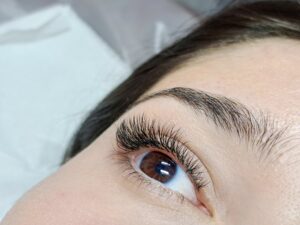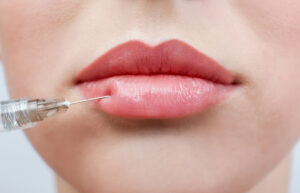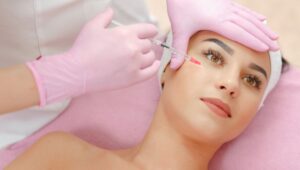Often times, it seems that patients can become confused when choosing between the different options for facial injections. Which is better? Which costs less? Are there are differences that to be aware of? These are just some of the questions that can come up. And it’s completely understandable. Especially when there seems to be multiple options that essentially do the same thing.
Probably the biggest comparative that comes up often is when it comes to deciding between BOTOX or Dysport. They both seem to be offered for treatment of the same things but beyond the quantities used in treatments are there really any differences that should be known?
In this post we aim to answer these questions and others to help you fully understand the important differences between BOTOX and Dysport so you can make an informed decision when you’re booking your next treatment as James Christian Cosmetics.
What Is BOTOX/Dysport Made Of?
BOTOX and Dysport are essentially made from the same core compound (at least from that view of a consumer). BOTOX is OnabotulinumtoxinA while Dysport is abobotulinumtoxinA.
Though don’t be confused – despite their similar core, their creation methods and full composition differ as they are actually made by two different providers. Allergan is the creator of BOTOX and Medicis is the creator of Dysport.
In terms of time frame – BOTOX was on the scene first. They were approved by the FDA as far back as December 9, 1991.
Dysport on the other hand came out much later and was approved by the FDA more recently on April 29, 2009.
What Are Their Main Differences?
While BOTOX and Dysport share a similar composition there are a few differences that you should be made aware of.
Fast Acting – First is that it’s generally believed that Dysport can be viewed as a faster acting treatment compared to BOTOX. It’s been known to start being effective on average of 2-5 days after injection. While BOTOX generally becomes effective on average 4-7 days after injection.
Long Lasting – The other consideration is how long they last. Some believe that BOTOX can generally last longer (from 3-12 months) depending on what areas are being treated. Dysport seems generally last 3-6 months after treatment. All though this is still up for debate and there doesn’t appear to be any official studies that can confirm these things.
Uses – Both are described as being an acetylcholine release inhibitor and neuromuscular blocking agent and have similar composition. But it’s clear that currently, BOTOX has more FDA approved uses under it’s belt for treatment of conditions other than reduction of wrinkles and fine lines. However, this is not to say that Dysport couldn’t get more FDA approved uses in the future as well. New uses can be approved any time after a product has been initially approved.
Effective Areas – It’s believe that each product has it’s own strengths in areas of treatment based on the results needed. The main factor affecting this is that Dysport tends to diffuse more which can be an advantage in some areas of treatment and a disadvantage in others. It’s hard to create a general statement of which is best in any given situation. This is why we encourage you to come in for a free consultation so we can help you determine which option might be best for your specific needs.
Costs – Costs may appear to be the same for both products at first glance. However, according to self reported reviews for BOTOX and Dysport on Realself this may not be entirely true. Based on this data it appears that Dysport comes in slightly cheaper in a cost per session perspective. There might be several factors that come in to play to account for this – one being the areas being treated and the results required. For example, using Dysport in certain areas where better diffusion may be an advantage this may results in less units being needed than would be needed if using BOTOX in the same location. Of course, this is pure speculation.
So Which One Is Better?
I don’t think we can declare either one as being a clear winner in this comparison. They each offer a few advantages over the other in certain circumstances that need to be considered. There is also your personal experiences using each product to consider as well. It really boils down to what your personal preference is.
Which One Should You Choose?
Again, as there is no clear “winner”, in many ways it’s just going to come down to your own personal preference discovered from trying each product out for different applications. Your own personal results may vary for each product and it’s use in different areas of treatment. If you find you’ve tried one and get unwanted side effects such as irritation you may be a candidate for trying the other as an alternative. If you’re still unsure which you should try or you have more questions about the differences between the two products we encourage you to give us a call and come in for a free consultation where we can answer all of your questions and present you what we feel might be your best option based on what your goals are with getting facial injection treatments.
*Information in this article is not medical advice and may not be factually accurate. It is intended for entertainment purposes only. Consult with a physician before attempting any tips in this blog post and to get the most up to date factual data about any procedure or treatment.














